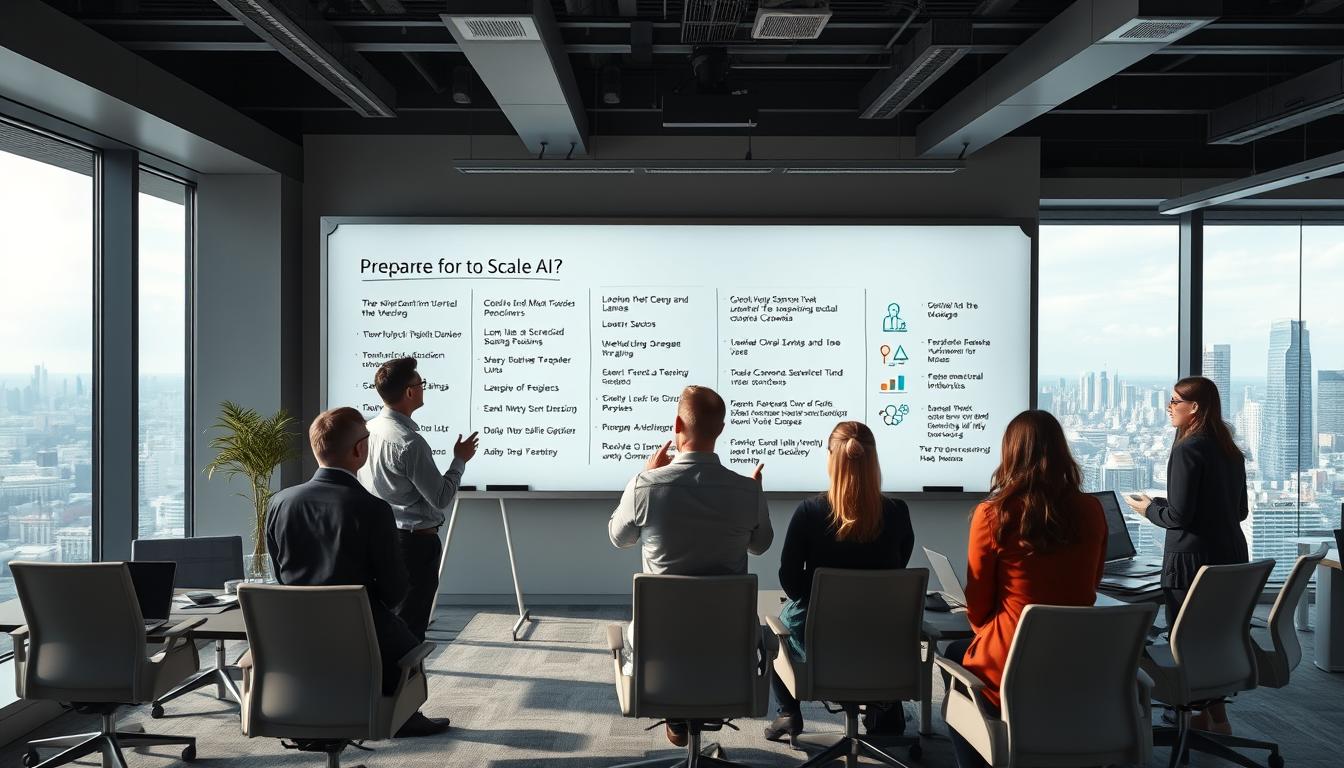Imagine walking into your next career opportunity fully prepared for every curveball – technical challenges, cultural fit assessments, and behavioral scenarios. How much time could you save if you had proven frameworks to structure winning responses?
This guide delivers exact strategies to decode hiring processes at top companies. You’ll learn to align your experience with employer priorities using automated tools that handle repetitive tasks, freeing you to focus on what matters – showcasing your unique value.
We’ve analyzed successful candidates to create actionable templates for:
- Technical problem-solving approaches
- Cultural alignment narratives
- Behavioral response patterns
RoboApply’s Auto Apply feature lets you simultaneously pursue multiple opportunities while maintaining tailored preparation for each role. This isn’t generic advice – it’s battle-tested methodology refined through real-world success stories.
Key Takeaways
- Access ready-made response frameworks recognized by hiring teams
- Streamline preparation with automated job-matching technology
- Master both technical evaluations and soft skill assessments
- Position your background as the solution to specific company needs
- Leverage time-saving tools to handle application logistics
Understanding the StayAlfred Interview Process
Corporate selection procedures often follow predictable patterns, but each organization adds unique elements. Knowing these patterns helps you prepare smarter, not harder. Let’s break down how modern companies structure their evaluations.
Phases of Modern Candidate Assessments
Most hiring workflows start with screening calls to verify basic qualifications. Technical evaluations then test job-specific skills through coding challenges or case studies. Behavioral rounds focus on teamwork and decision-making scenarios.
What Employers Really Measure
Companies assess three core areas: technical expertise, cultural alignment, and leadership potential. Technical skills show you can handle daily tasks. Cultural fit reveals how you’ll collaborate with teams. Leadership qualities indicate growth capacity.
RoboApply’s preparation tools analyze these priorities through practice simulations. Their platform matches your responses to what hiring panels seek. You’ll learn to highlight relevant experience at each process stage.
Timing matters too. Screening calls often occur within 48 hours of application submission. Final rounds might involve multiple team members over several weeks. Planning prevents last-minute scrambles.
Unlike competitors, some organizations prioritize real-world problem-solving over textbook answers. Researching these differences helps tailor your approach. Combine this insight with automated tools to save time while maintaining personalization.
Essential StayAlfred Interview Questions to Prepare For
Modern hiring panels assess candidates through carefully crafted scenarios that reveal both expertise and workplace compatibility. Let’s explore the types of inquiries you’ll likely encounter and how to structure impactful responses.

Common Scenario-Based Inquiries
Expect to address real-world situations like this example from a leading healthcare organization:
“How do you coordinate deliverables when stakeholders revise project parameters after kickoff?”
This tests your adaptability and communication skills. Another frequent challenge involves team dynamics:
“Describe your approach to aligning specialists with conflicting priorities on tight deadlines.”
Core Competencies Evaluators Seek
Hiring teams analyze three key areas through these inquiries:
- Leadership capacity: Can you guide groups through complex challenges?
- Adaptive thinking: How do you handle unexpected obstacles?
- Collaborative instinct: Do you build consensus across functions?
Consider this response framework for requirement changes:
“When parameters shift, I first validate the business rationale. Last quarter, I realigned our UX team by breaking revisions into phased deliverables. This maintained momentum while accommodating new stakeholder needs.”
RoboApply’s AI resume scanner helps identify relevant experiences from your background. Their templates then show how to present these stories with clear conflict-action-result structures.
Preparing Your Answers with RoboApply Tools
Transform your preparation into a competitive advantage using smart technology. RoboApply’s specialized features streamline how you present skills while maintaining authenticity.
Leveraging the AI Resume and Cover Letter Builder
The AI builder scans your work history to spotlight relevant achievements. It matches your experience with role requirements, suggesting examples that demonstrate leadership or problem-solving. This saves hours of manual research while ensuring alignment with employer priorities.
For complex tasks like multi-team coordination, the tool identifies transferable skills from past roles. You’ll learn to frame responsibilities in ways that resonate with hiring panels. One user reworked retail management experience into compelling project leadership narratives using these suggestions.
Using the Grammar Checker for Clarity
Clear communication separates strong candidates from exceptional ones. RoboApply’s grammar analyzer reviews written and verbal responses for professionalism. It flags jargon-heavy phrases and suggests simpler alternatives without losing technical precision.
The checker also helps structure ideas using proven frameworks. When explaining how you handled conflicting priorities, it might recommend:
“First, I validated stakeholder needs. Then, I created phased deliverables to balance immediate tasks with long-term goals.”
In addition to polishing language, the platform teaches industry-specific terminology. This strengthens credibility during technical discussions. Pair these tools with structured preparation strategies for comprehensive readiness.
Developing Your Interview Strategy with RoboApply Features
Streamline your job search while maintaining personalized preparation using RoboApply’s specialized toolkit. These features help you manage applications across multiple companies without sacrificing quality or focus.

Implementing the Auto-Apply Chrome Extension
RoboApply’s Auto-Apply extension eliminates hours of manual form-filling. With one click, it populates applications using your pre-loaded profile data. This automation lets you allocate energy to researching companies rather than typing repetitive details.
One user secured 12 interviews in three weeks using this tool while preparing responses through AI mock interview tools. The system even tracks submission dates to prevent missed deadlines during months-long hiring cycles.
Maximizing the ATS Optimizer and Job Tracker
The ATS Optimizer reformats resumes to match specific applicant tracking systems. It analyzes job descriptions to emphasize relevant keywords, increasing visibility. One candidate improved callback rates by 40% after optimizing their materials.
Combine this with the Job Tracker to monitor progress through multi-stage processes. Color-coded dashboards show which applications need follow-ups or preparation updates. You’ll save money by avoiding costly mistakes like duplicate submissions or mismatched materials.
These tools draw from years of hiring data to predict timelines and requirements. The platform alerts you when companies typically schedule interviews, helping you plan practice sessions. Focus your time on crafting stories that showcase leadership – let RoboApply handle the logistics.
Tips for Structuring Your Interview Responses
Effective communication separates confident candidates from the competition. Structuring your answers strategically helps people grasp your value quickly. Follow these methods to create responses that resonate across industries and experience levels.
Crafting Standalone Paragraphs for Each Tip
Master the STAR framework to build complete stories. For example:
“When our team faced delayed approvals (Situation), I organized cross-department syncs (Action) to meet the launch deadline (Result).”
Each response should work independently. Avoid references to earlier answers. This approach gives interviewers a clear picture without follow-up questions.
Allocate conversation space wisely. Spend 60% of your time explaining actions and results. Keep situational context brief. This balance keeps people engaged while showcasing problem-solving skills.
Using Clear, Direct Language
Replace technical jargon with simple terms. Instead of “orchestrated synergistic deliverables,” say “led collaborative projects.” Clear phrasing makes your experience relatable to all decision-makers.
Adapt your style for different formats. Phone screens need tighter pacing – practice 90-second summaries. Panel discussions require addressing multiple stakeholders. Use phrases like “From an engineering perspective…” to show awareness of diverse viewpoints.
These methods work today for any career stage. Pair them with data analyst interview strategies to handle role-specific scenarios. You’ll present ideas in a way that feels natural yet polished, turning interviews into productive conversations about your potential.
Behavioral Interview Challenges and How to Answer Them
Behavioral assessments reveal how you operate in real-world scenarios. To stand out, your responses must demonstrate growth and alignment with company values through concrete examples.
Showcasing Impact Through Stories
When asked about favorite job aspects, connect tasks to bigger-picture goals. A marketing specialist might say:
“I thrive when bridging technical teams with clients. Last quarter, I led a cross-functional project that reduced customer onboarding time by 30% – aligning perfectly with our mission to simplify experiences.”
This answer highlights project management skills while showing value creation. Notice the focus on measurable outcomes and team dynamics.
For challenges faced in roles, structure responses to show progression. A software developer could explain:
“Initial struggles with legacy code taught me to document solutions for the team. Now, we resolve similar issues 50% faster through shared knowledge hubs.”
This approach builds trust by demonstrating problem-solving that benefits others. It also addresses time efficiency – a key concern for hiring teams.
When discussing community impact, focus on collaborative efforts. Describe how you coordinated volunteer initiatives or mentored junior colleagues. One candidate secured a leadership role by explaining:
“I organized monthly skill-sharing sessions that improved our department’s retention rates by 25%.”
Balance individual achievements with team success. Use action verbs like “streamlined” or “facilitated” to show leadership without overshadowing collaborators.
Technical Questions You Might Encounter at StayAlfred
Technical expertise meets strategic communication in high-stakes evaluations. You’ll face inquiries testing both your technical depth and ability to explain complex systems to diverse audiences. Let’s break down common scenarios with actionable response strategies.

When asked about user story creation, focus on collaboration and business alignment. A strong answer might outline:
“I start by mapping feature requests to customer pain points. For a healthcare portal project, I worked with clinicians to break down requirements into testable components. This approach reduced rework by 40% during sprint reviews.”
Questions about testing involvement reveal your quality assurance mindset. Emphasize cross-functional partnerships:
“As a business analyst, I coordinate UAT sessions with end-users. For financial reporting tools, I designed test cases validating data accuracy across 15+ health monitoring systems.”
You’ll need to discuss system integration challenges. Prepare examples showing how you sort technical issues while maintaining project timelines. One candidate impressed evaluators by explaining their phased rollout strategy for a hotel management platform:
“We prioritized API connections affecting guest experience first, then addressed back-office integrations.”
For estimation questions, demonstrate awareness of multiple factors. Mention how you balance technical complexity with business priorities. Use percentages or time metrics to quantify your impact.
When addressing health-related technical roles, highlight specific tools or protocols you’ve mastered. Explain complex concepts using analogies non-technical people understand – compare data validation to cross-checking medical records, for instance.
Always connect technical decisions to business outcomes. Show how your choices improve system reliability, user satisfaction, or operational efficiency. This dual focus proves you understand technology’s role in driving organizational success.
Preparing for Collaborative or Panel Interviews
Navigating panel discussions requires balancing multiple perspectives while showcasing your collaborative instincts. These sessions often involve people from different departments, each assessing how you’ll contribute to their team’s success. Your ability to connect with varied roles – from technical specialists to department heads – becomes critical.

Strategies for Addressing Group Dynamics
Start by researching your panelists’ roles. A product manager cares about cross-functional alignment, while a senior executive focuses on strategic impact. Tailor examples to address these priorities without losing cohesion.
When answering, maintain eye contact with the questioner first, then shift attention to others. This shows respect while keeping the group engaged. For example:
“That’s an excellent point, Sarah. To address the technical aspect – [answer]. From a leadership perspective, John, this aligns with our quarterly goals by…”
Handle conflicting queries by acknowledging valid viewpoints. If two employees present opposing ideas, respond with:
“Both approaches have merit. In my last role, we balanced similar priorities by…”
Build relationships during the session. Use active listening cues like nodding and paraphrasing complex questions. When discussing past projects, mention how you collaborated with team members at every level to achieve results.
For senior leaders, focus on organizational impact. With peers, emphasize practical execution. Tools like proven leadership strategies help structure responses that resonate across hierarchies.
Mock Interview Sessions and Role-Playing Scenarios
Transform practice sessions into precision tools through strategic role-play exercises. Simulating real-world interactions helps you refine responses while managing nerves. Many candidates discover hidden habits affecting their performance during these drills.
Benefits of Recording Your Practice Sessions
Video analysis reveals subtle body language issues like stiff posture or distracted eye contact. Review recordings to identify verbal patterns – do you overuse filler words when discussing time-sensitive projects? One user noticed they rushed technical explanations after the 5-minute mark.
Compare multiple takes to track progress. You might spot improvement in how you articulate project impacts across different days. This method helps transform abstract concepts into measurable growth areas.
Integrating Feedback from RoboApply's Interview Coach
The AI coach analyzes your pacing, content relevance, and clarity. It flags moments where responses could better address company values or people priorities. Users typically see 30% improvement in structured storytelling within a couple weeks.
Actionable tips help streamline preparation time. One candidate reduced their rehearsal period from 14 days to 3 by focusing on high-impact areas. The system prioritizes feedback that prevents costly mistakes during actual evaluations.
Combine these tools with peer reviews to balance technical accuracy and human connection. You’ll learn to address diverse people perspectives while maintaining professional authenticity – a critical skill for team-oriented roles.
FAQ
How does StayAlfred’s hiring process differ from competitors?
The framework emphasizes real-world problem-solving through scenario-based questions. Expect multiple stages assessing both technical expertise and cultural alignment. Research their client management strategies in hospitality to tailor responses.
What tools can streamline application preparation?
RoboApply’s AI resume builder auto-formats experience using hospitality industry keywords. The cover letter generator creates role-specific narratives by analyzing job descriptions. Always cross-verify outputs with the grammar checker for tone consistency.
How do I handle group interviews effectively?
Balance participation by acknowledging others’ points before adding insights. Use RoboApply’s mock interview recordings to practice pacing and nonverbal cues. Prepare 2-3 collaborative project examples demonstrating conflict resolution skills.
Are technical questions role-specific or general?
Property management roles require revenue calculation drills and CRM software knowledge. Corporate positions focus on market analysis frameworks. Study StayAlfred’s case studies on urban hospitality trends for context.
Can automation tools hurt my application’s authenticity?
RoboApply’s ATS optimizer maintains personal voice while ensuring keyword alignment. The interview coach provides feedback on AI-generated answers to help refine natural delivery. Always customize templates with specific achievements.
What metrics determine success in final rounds?
Decision-makers evaluate scalability of ideas and alignment with occupancy rate optimization goals. Use the job tracker to research recent company expansions and tie responses to regional market gaps.
How crucial are behavioral questions in early stages?
Initial screenings prioritize conflict resolution and adaptability examples. Structure responses using RoboApply’s STAR framework templates, emphasizing measurable outcomes like guest satisfaction improvements or cost reductions.


















